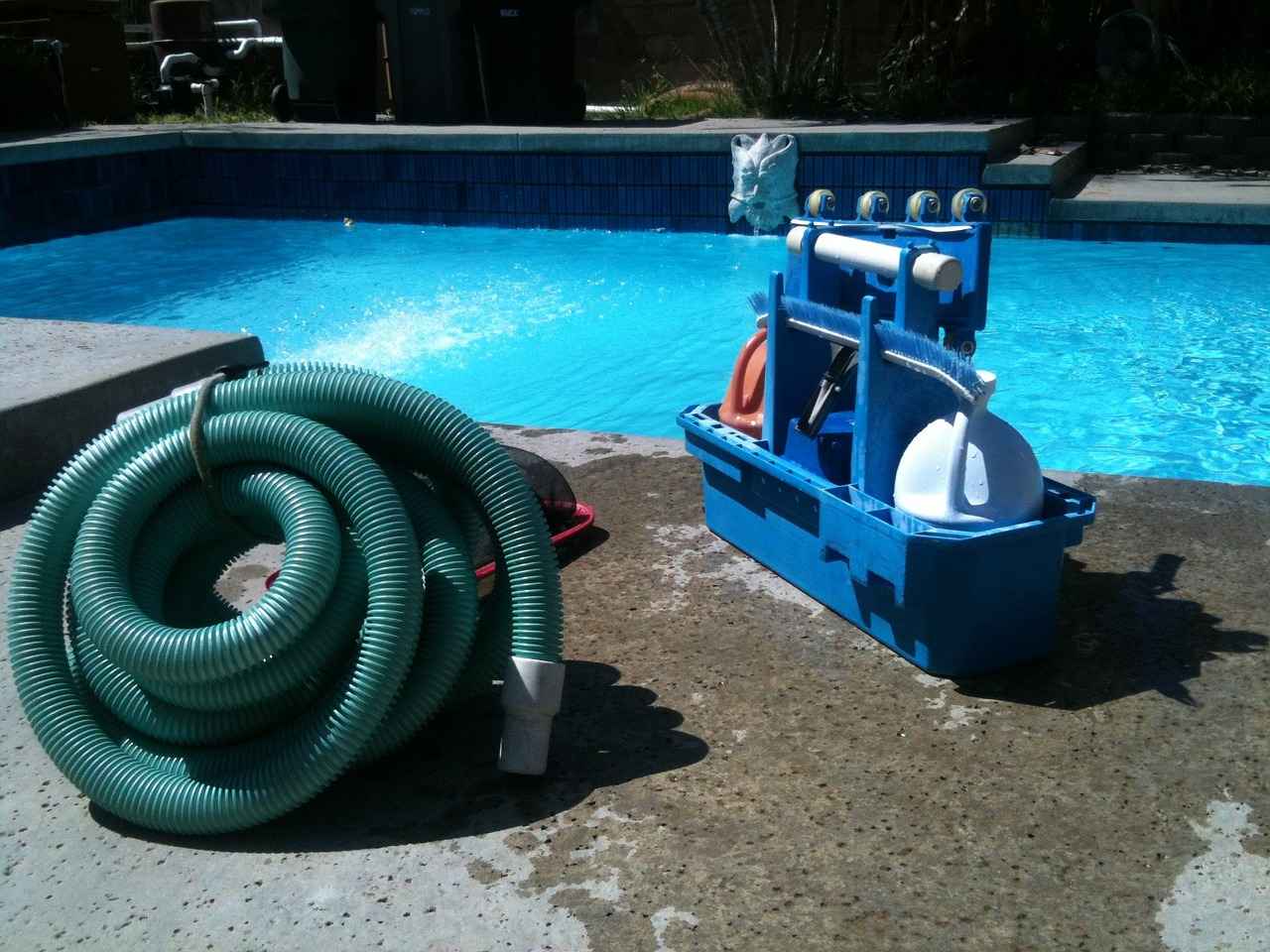This article serves as a comprehensive guide on how to reset the oil life indicator for the 2014 Honda Accord. Keeping your vehicle’s maintenance up to date is crucial for ensuring its longevity and performance. By following the steps outlined below, you can easily manage your car’s oil life indicator.
Why Is It Important to Reset Oil Life?
Resetting the oil life indicator is essential for maintaining your vehicle’s overall health. This indicator not only helps you track when to change your oil but also enhances engine performance and efficiency. Ignoring it can lead to premature engine wear and costly repairs.
What Are the Signs That Oil Needs Changing?
- Unusual Engine Noises: If your engine starts making knocking or tapping sounds, it may be time for an oil change.
- Oil Change Light: A warning light on your dashboard is a clear sign that your oil needs attention.
- Oil Color and Consistency: Dark, gritty oil indicates that it’s time for a change.
How Often Should You Change Your Oil?
Generally, it’s recommended to change your oil every 5,000 to 7,500 miles. However, factors like driving conditions and oil type can influence this frequency. Always refer to your owner’s manual for specific recommendations.
Preparing Your Honda Accord for an Oil Change
Before you reset the oil life indicator, ensure your vehicle is prepared for an oil change. Gather necessary tools such as an oil filter wrench, a socket set, and new oil. Also, make sure the engine is cool to avoid burns while working.
Step-by-Step Guide to Reset Oil Life on Honda Accord 2014
Follow these detailed steps to reset the oil life indicator:
- Turn the ignition to the ON position without starting the engine.
- Press the Home button on the dashboard.
- Select Settings and then Vehicle.
- Navigate to Oil Life and select Reset.
- Confirm the reset by following the prompts on the screen.
Common Mistakes to Avoid When Resetting Oil Life
Many drivers make mistakes during the reset process, such as:
- Not having the engine in the correct position.
- Skipping steps in the reset process.
To avoid these pitfalls, follow the steps carefully and ensure you understand each part of the process.
What to Do If the Reset Doesn’t Work?
If you encounter issues, try turning the ignition off and on again. If the problem persists, consult your owner’s manual or seek professional help.
Maintaining Your Honda Accord Between Oil Changes
Regular maintenance is key to a long-lasting vehicle. Between oil changes, be sure to check:
- Fluid levels (brake, coolant, transmission).
- Tire pressure and tread depth.
- Battery condition and connections.
When to Seek Professional Help for Oil Changes
While many drivers can perform oil changes and resets themselves, there are times when it’s best to consult a professional. If you’re unsure about the process or experience any issues, don’t hesitate to contact a mechanic.

Why Is It Important to Reset Oil Life?
Resetting the oil life indicator in your vehicle is a task that should never be overlooked. This simple action plays a critical role in maintaining your car’s performance and longevity. By understanding the importance of this process, you can ensure that your vehicle continues to run smoothly and efficiently.
The oil life indicator is designed to track the condition of your engine oil and notify you when it’s time for a change. Regular oil changes are essential for optimal engine health, as they help to remove contaminants and ensure proper lubrication. If the oil life indicator is not reset after an oil change, it may lead to confusion regarding when the next service is due, potentially resulting in neglected maintenance.
When the oil life indicator is not reset, you may miss out on timely oil changes, which can lead to various engine issues. Over time, old oil can become thick and dirty, causing it to lose its ability to lubricate the engine effectively. This can result in increased friction, overheating, and ultimately, engine damage. Therefore, resetting the oil life indicator is not just a matter of convenience; it is a necessary step to ensure the longevity of your vehicle.
Moreover, keeping track of your oil changes can improve your vehicle’s fuel efficiency. Fresh oil allows the engine to operate more smoothly, which can enhance gas mileage. If you neglect this aspect of maintenance, you may find yourself spending more at the pump, which can add up significantly over time.
In addition to performance benefits, regularly resetting the oil life indicator can also contribute to the overall value of your vehicle. A well-maintained car is likely to have a higher resale value, as prospective buyers are often attracted to vehicles that have been consistently cared for. Documenting your oil changes and maintenance can provide potential buyers with peace of mind, knowing that the car has been well looked after.
To summarize, resetting the oil life indicator is a simple yet significant step in vehicle maintenance. It helps you stay on top of your oil change schedule, ensuring optimal engine health, improved fuel efficiency, and maintaining the vehicle’s resale value. By making it a habit to reset the oil life indicator after each oil change, you are taking proactive measures to enhance your car’s performance and longevity.
In conclusion, understanding the importance of resetting the oil life indicator is essential for every vehicle owner. By doing so, you can maintain your car’s performance, ensure timely oil changes, and ultimately extend the life of your engine.

What Are the Signs That Oil Needs Changing?
When it comes to maintaining your vehicle, one of the most crucial aspects is keeping an eye on your engine oil. Recognizing the signs that your oil needs changing can prevent serious engine damage and enhance your car’s performance. Here are some key indicators to watch for:
- Unusual Engine Noises: If you start hearing knocking, ticking, or grinding sounds from the engine, it could be a sign that your oil is too old or contaminated. Fresh oil lubricates the engine components effectively, while old oil can lead to increased friction and noise.
- Oil Change Light: Most modern vehicles, including the Honda Accord, come equipped with an oil change light on the dashboard. If this light illuminates, it’s a direct reminder that your oil needs to be checked or changed soon. Ignoring this warning can lead to more significant issues down the line.
- Oil Color and Consistency: A quick visual inspection can reveal a lot about your oil’s health. Fresh oil typically has a golden or amber color, while old oil can appear dark brown or black. Additionally, if the oil feels gritty or has a milky consistency, it could indicate contamination or the presence of water, necessitating an immediate change.
- Oil Smell: If you notice a burnt smell coming from your engine or the oil itself, it could be a sign of overheating or excessive wear. This odor suggests that the oil is breaking down and losing its effectiveness, which could lead to engine wear.
- Excessive Exhaust Smoke: If your vehicle emits excessive smoke from the exhaust, it may be time to change the oil. Dark smoke can indicate that oil is burning, which can lead to engine damage if not addressed promptly.
- Frequent Oil Top-Ups: If you find yourself needing to add oil more frequently than usual, it could indicate that your oil is breaking down or that there are leaks in the engine. Regularly monitoring your oil levels is essential for maintaining engine health.
Being proactive about your vehicle’s oil changes not only helps in maintaining optimal engine performance but also contributes to the longevity of your car. If you notice any of these signs, it’s advisable to schedule an oil change with a qualified mechanic. Regular checks and timely oil changes can save you from costly repairs and ensure that your engine runs smoothly for years to come.

How Often Should You Change Your Oil?
Maintaining your vehicle’s health is crucial for its longevity and performance. One of the most important aspects of car maintenance is ensuring that you change your oil regularly. This question often comes up among car owners, and the answer can vary based on several factors.
The general recommendation for oil changes is every 5,000 to 7,500 miles. However, this guideline isn’t set in stone. Various factors can influence how frequently you should change your oil:
- Driving Conditions: If you often drive in stop-and-go traffic, tow heavy loads, or drive in extreme temperatures, you may need to change your oil more frequently.
- Oil Type: Synthetic oils typically last longer than conventional oils. If you use synthetic oil, you might be able to extend your oil change intervals.
- Vehicle Age: Older vehicles may require more frequent oil changes due to engine wear and tear.
In addition to following mileage guidelines, it’s essential to pay attention to your vehicle’s performance. Here are some signs that your oil may need changing:
- Engine Noise: If your engine starts to sound louder than usual, it may be a sign that the oil is dirty and not lubricating effectively.
- Oil Change Light: Most modern vehicles are equipped with an oil change light that illuminates when it’s time for a change. Ignoring this warning can lead to serious engine damage.
- Oil Color and Consistency: Checking the oil dipstick can reveal a lot. If the oil appears dark and gritty, it’s time for a change.
Changing your oil regularly has several benefits:
- Improved Engine Performance: Fresh oil lubricates engine components better, leading to smoother operation.
- Increased Fuel Efficiency: Clean oil helps your engine run more efficiently, which can improve your fuel economy.
- Extended Engine Life: Regular oil changes can prevent engine wear, ultimately extending the lifespan of your vehicle.
To establish the best oil change schedule for your car, consider the following:
- Owner’s Manual: Always refer to your vehicle’s owner’s manual, as it provides specific recommendations based on your car’s make and model.
- Driving Habits: Assess your driving habits and adjust your oil change schedule accordingly. If you frequently drive under harsh conditions, you may need to change your oil more often.
- Oil Type: Consult with a professional mechanic about the best oil type for your vehicle and how it affects change intervals.
In conclusion, while the general guideline for oil changes is every 5,000 to 7,500 miles, various factors can influence this interval. By understanding your driving habits, vehicle type, and oil specifications, you can ensure your car remains in optimal condition. Regular oil changes not only enhance performance but also extend the life of your vehicle, making it a crucial aspect of car maintenance.

Preparing Your Honda Accord for an Oil Change
Preparing your Honda Accord for an oil change is an essential step in ensuring your vehicle runs smoothly and efficiently. Proper preparation not only helps in the longevity of your engine but also makes the oil change process easier and more effective. Below are some crucial steps you should follow before resetting the oil life indicator.
Before you begin the oil change process, it is important to gather all necessary tools and materials. This includes:
- New Oil: Make sure to select the correct type and viscosity for your Honda Accord.
- Oil Filter: A new filter is essential for optimal engine performance.
- Wrench Set: To remove the oil drain plug and filter.
- Oil Catch Pan: To collect the used oil during the change.
- Funnel: For pouring the new oil without making a mess.
- Rags or Paper Towels: For cleaning up spills and wiping hands.
Before starting the oil change, always check that the engine is cool to the touch. Working on a hot engine can be dangerous and may lead to burns or other injuries. Allow the vehicle to sit for at least 30 minutes after driving to ensure it has cooled down sufficiently.
Before you drain the old oil, it’s beneficial to check the oil level using the dipstick. This can help you assess how much oil is currently in the engine and determine if there are any underlying issues, such as:
- Low Oil Level: This may indicate a leak or excessive oil consumption.
- Dirty Oil: If the oil appears dark and gritty, it’s time for a change.
Having a clean and organized work area can make the oil change process much smoother. Make sure to park your Honda Accord on a level surface and use wheel chocks to prevent rolling. Lay down some old newspapers or a drop cloth to catch any spills.
Always prioritize safety when performing maintenance on your vehicle. Here are some important safety tips to keep in mind:
- Wear Gloves: Protect your hands from oil and other contaminants.
- Use Safety Glasses: Protect your eyes from splashes and debris.
- Dispose of Oil Properly: Take used oil to a recycling center or an auto parts store that accepts it.
Before you proceed with the oil change, double-check that you have everything you need and that your work area is safe and clean. Ensure that the new oil and filter are ready to go. Once you have confirmed all these steps, you can confidently move on to resetting the oil life indicator and completing the oil change process.

Step-by-Step Guide to Reset Oil Life on Honda Accord 2014
Resetting the oil life indicator on your Honda Accord is an essential part of maintaining your vehicle’s health. This detailed guide will walk you through the process step-by-step, ensuring that you can easily track your vehicle’s maintenance schedule. Keeping the oil life indicator accurate is crucial for timely oil changes and optimal engine performance.
Follow these steps to reset the oil life indicator:
- Turn on the Ignition: Start by inserting the key into the ignition and turning it to the “ON” position without starting the engine. This will activate the electrical systems in your vehicle.
- Access the Settings Menu: Using the buttons on your steering wheel, navigate to the Settings menu on your dashboard display. Look for an option labeled Vehicle Settings.
- Select Oil Life: Once in the Vehicle Settings, scroll down to find the Oil Life option. This is where you will initiate the reset process.
- Reset the Indicator: After selecting the Oil Life option, press and hold the Enter button (or the equivalent button on your model). A confirmation message will appear, prompting you to confirm the reset.
- Confirm Reset: Select Yes to confirm that you want to reset the oil life indicator. You should see a message indicating that the reset was successful.
- Turn Off the Ignition: Finally, turn off the ignition and then restart your vehicle to ensure the oil life indicator has been reset properly.
Resetting the oil life indicator is vital for several reasons:
- Maintenance Tracking: It helps you keep track of when your next oil change is due, preventing potential engine damage.
- Engine Health: Regular oil changes based on accurate indicators ensure that your engine remains lubricated and functions optimally.
- Fuel Efficiency: A well-maintained engine can improve fuel efficiency, saving you money in the long run.
To ensure a smooth reset process, avoid these common mistakes:
- Not Starting the Ignition: Ensure the ignition is in the “ON” position; otherwise, the settings won’t be accessible.
- Skipping Confirmation: Always confirm the reset when prompted; otherwise, the indicator may not reset properly.
- Ignoring Maintenance Schedule: Remember to follow your vehicle’s maintenance schedule even after resetting the indicator.
If you find that the reset process hasn’t worked, consider these troubleshooting steps:
- Check for Error Messages: Look for any error messages on the dashboard that might indicate a problem.
- Repeat the Process: Sometimes, repeating the reset process can resolve the issue.
- Consult the Owner’s Manual: Your owner’s manual may have additional troubleshooting steps specific to your model.
By following this comprehensive guide, you can easily reset the oil life indicator on your Honda Accord, ensuring that your vehicle remains in top condition for years to come.

Using the Dashboard Controls to Reset Oil Life
Resetting the oil life indicator on your Honda Accord is a crucial maintenance task that ensures your vehicle runs efficiently. This process can be accomplished in just a few minutes by navigating the dashboard controls. In this section, we will provide a detailed guide on how to effectively reset the oil life indicator, ensuring that you maintain optimal performance for your vehicle.
Before diving into the reset process, it’s important to familiarize yourself with the dashboard layout of your Honda Accord. The dashboard features various controls and displays that provide essential information about your vehicle. Look for the multi-information display (MID) and the buttons located on the steering wheel or dashboard that allow you to navigate through the settings.
- Begin by turning the ignition key to the ON position without starting the engine. This will activate the dashboard displays.
- Ensure that the vehicle is in PARK mode for safety.
Once the ignition is on, follow these steps to access the oil life indicator:
- Use the arrow buttons on the steering wheel to navigate to the Settings menu on the MID.
- Scroll through the options until you find Oil Life or Maintenance.
After locating the oil life setting, you can now proceed to reset it:
- Press and hold the Reset button (usually located on the dashboard or within the settings menu).
- A prompt will appear asking if you want to reset the oil life. Confirm your choice by selecting Yes.
To ensure that the reset was successful:
- Return to the oil life indicator display.
- The oil life percentage should now read 100%, indicating that the reset was successful.
Sometimes, you might encounter issues when trying to reset the oil life indicator. Here are some common problems and their solutions:
- If the indicator does not reset, ensure that you are following the steps correctly and that the vehicle is in PARK.
- Check the owner’s manual for specific instructions tailored to your model year.
Regularly resetting the oil life indicator is vital for maintaining your Honda Accord’s engine health. It helps you keep track of when to change your oil, preventing potential engine damage caused by old or degraded oil. By following these steps, you can ensure that your vehicle remains in top condition.
In summary, resetting the oil life indicator on your Honda Accord is a straightforward process that can be completed in just a few minutes. By understanding your dashboard controls and following the outlined steps, you can maintain your vehicle’s performance and longevity.
Accessing the Settings Menu
Accessing the settings menu on your Honda Accord is a crucial first step in resetting the oil life indicator. This process is designed to help you maintain your vehicle’s performance and ensure that your oil changes are tracked accurately. Below is a detailed guide on how to navigate this process effectively.
Before you begin, ensure that your vehicle is in the ON position without starting the engine. This allows the dashboard display to activate, enabling you to access the necessary settings.
Your Honda Accord features a user-friendly dashboard with controls that are easy to navigate. Look for the menu button, which is typically located on the steering wheel or near the center console. This button will allow you to access various vehicle settings.
Once you have activated the dashboard, press the menu button to bring up the main display. From here, use the arrow keys or the control knob to scroll through the options. You are looking for the Settings menu, which may be labeled as Vehicle Settings or something similar.
After entering the settings menu, continue to scroll until you find the Oil Life Reset option. This is where you can manage the oil life indicator for your Honda Accord. Once you’ve located it, select this option by pressing the enter button or the control knob.
Upon selecting the oil life reset option, you will typically be prompted to confirm your choice. This step is important to prevent accidental resets. Use the appropriate button to confirm, which may be labeled as Yes or Confirm.
After confirming the reset, return to the main dashboard display. The oil life indicator should now show 100%, indicating that the reset was successful. It is advisable to double-check this to ensure that your vehicle’s maintenance tracking is accurate.
- Refer to the Owner’s Manual: Always consult your owner’s manual for specific instructions related to your model.
- Regular Maintenance: Keep track of your oil changes and maintain a regular schedule for optimal engine performance.
- Seek Professional Help: If you encounter difficulties, don’t hesitate to contact a professional mechanic for assistance.
By following these steps, you can efficiently access the settings menu on your Honda Accord and reset the oil life indicator. This simple process is essential for ensuring that your vehicle remains in peak condition, helping you to avoid potential engine issues down the road.
Resetting the Oil Life Indicator
Resetting the oil life indicator on your Honda Accord is a vital maintenance step that ensures your vehicle remains in optimal condition. This process helps track oil changes, allowing you to maintain your engine’s health effectively. Below is a detailed guide on how to successfully reset the oil life indicator.
Resetting the oil life indicator is crucial for several reasons. It helps you keep track of when your next oil change is due, which can prevent engine wear and tear. Regularly monitoring this indicator allows you to maintain your vehicle’s performance and extend its lifespan.
To begin the reset process, you must first access the settings menu on your Honda Accord’s dashboard. Follow these steps:
- Turn on the ignition without starting the engine.
- Use the dashboard controls to navigate to the settings menu.
Once you have accessed the settings menu, follow these detailed instructions to reset the oil life indicator:
- Locate the Oil Life option within the settings.
- Press and hold the Enter button until the oil life resets to 100%.
- Release the button once you see the confirmation message.
This straightforward process typically involves holding down the appropriate buttons until the indicator resets. Make sure to follow these steps closely to avoid any errors.
Many drivers encounter issues when attempting to reset the oil life indicator. Here are some common mistakes to avoid:
- Not turning on the ignition properly.
- Failing to hold the button long enough for the reset to take effect.
- Neglecting to check if the oil change has been performed before resetting.
If you find that the reset process did not work, there are a few troubleshooting steps you can take:
- Double-check that you are following the steps correctly.
- Ensure that the vehicle is in the correct mode (ignition on, engine off).
- If problems persist, consult your owner’s manual for specific instructions.
In addition to resetting the oil life indicator, regular maintenance is crucial. Here are some tips to keep your Honda Accord running smoothly:
- Check the oil level regularly and top up as needed.
- Inspect the oil for any discoloration or unusual consistency.
- Monitor for any warning lights on the dashboard.
While many drivers can reset the oil life indicator themselves, there are times when professional assistance is advisable. If you are unsure about the oil change process or encounter persistent issues with the reset, it is wise to consult a qualified mechanic. They can provide expert insights and ensure your vehicle receives the care it needs.

Common Mistakes to Avoid When Resetting Oil Life
When it comes to maintaining your Honda Accord, one of the crucial tasks is resetting the oil life indicator after an oil change. However, many drivers encounter challenges during this process. Common mistakes can lead to frustration and wasted time. To ensure a smooth reset, it’s important to be aware of these pitfalls and how to avoid them.
Resetting the oil life indicator might seem straightforward, but drivers often overlook simple steps or misinterpret the instructions. This can be due to:
- Lack of Familiarity: Many drivers are not accustomed to using the dashboard controls effectively.
- Inadequate Preparation: Failing to prepare your vehicle properly can lead to confusion during the reset.
- Distractions: Attempting to reset the oil life while distracted can result in missed steps.
Here are some key mistakes to watch out for when resetting the oil life on your Honda Accord:
- Skipping the Owner’s Manual: Not consulting the owner’s manual can lead to incorrect procedures. Always refer to the manual for specific instructions related to your model.
- Ignoring the Engine Status: Attempting to reset the oil life while the engine is running can prevent the reset from taking effect. Ensure the engine is off before you begin.
- Not Following the Steps Precisely: Each model may have slightly different steps for resetting the oil life. Ensure you follow the exact sequence of button presses as outlined in the manual.
- Neglecting to Check the Oil Level: Before resetting, always check the oil level. If it’s low, adding oil before the reset is essential to avoid engine damage.
- Failing to Confirm the Reset: After completing the reset process, check the oil life indicator again to ensure it has been updated. If not, repeat the steps carefully.
To avoid these mistakes, preparation is key. Here are some tips:
1. Gather your owner’s manual and familiarize yourself with the reset process.2. Ensure your vehicle is parked on a level surface and the engine is off.3. Check the oil level and add oil if necessary.4. Minimize distractions by turning off the radio and putting away your phone.
If you realize you’ve made a mistake during the reset process, don’t panic. Simply follow these steps:
- Turn off the ignition and wait a moment.
- Restart the process from the beginning, ensuring you follow each step carefully.
- If issues persist, consult the owner’s manual or seek assistance from a professional.
By being aware of these common mistakes and preparing adequately, you can make the process of resetting the oil life indicator on your Honda Accord smooth and efficient. Remember, a successful reset is not just about following steps; it’s about understanding the importance of proper vehicle maintenance.

What to Do If the Reset Doesn’t Work?
When it comes to maintaining your 2014 Honda Accord, resetting the oil life indicator is a crucial step after an oil change. However, there may be instances when the reset process does not go as planned. In such cases, knowing what actions to take can save you time and frustration. This article explores the troubleshooting steps you can follow if you encounter issues while resetting the oil life.
Before diving into troubleshooting, it’s essential to understand how the reset process works. The oil life indicator is designed to monitor engine performance and oil condition, alerting you when it’s time for a change. If the reset does not work, it may be due to a few common issues.
- Improper Sequence: The most frequent cause of reset failure is not following the correct sequence of steps. Ensure you are holding down the right buttons in the specified order.
- Dashboard Malfunction: Sometimes, the dashboard display may have a glitch or malfunction, preventing the reset from occurring.
- Battery Issues: A weak or failing battery can affect the electronic systems in your vehicle, including the oil life indicator.
If you find that the oil life reset does not work, consider the following troubleshooting steps:
- Check the User Manual: Always start by consulting your Honda Accord’s user manual. It provides specific instructions tailored to your model.
- Ensure Proper Engine State: Make sure the engine is off and the keys are removed from the ignition before attempting the reset.
- Follow the Reset Sequence: To reset the oil life, turn the ignition to the “ON” position without starting the engine. Then, press the gas pedal three times within five seconds. This sequence is crucial for a successful reset.
- Inspect the Dashboard: Look for any warning lights or error messages that may indicate a deeper issue. If there are persistent warnings, you may need to address those first.
- Battery Check: If the dashboard is unresponsive or flickering, test the battery. A simple battery check can reveal if it needs replacement.
- Reset the System: If everything seems normal but the reset still fails, try disconnecting the battery for a few minutes. This action can reset the system and may resolve the issue.
- Seek Professional Help: If none of the above steps work, it may be time to consult a professional mechanic. They have the tools and expertise to diagnose and fix any underlying issues.
Once you successfully reset the oil life indicator, it’s essential to maintain it properly. Regular checks and following the manufacturer’s recommendations for oil changes will ensure that your vehicle runs smoothly. Additionally, keeping a maintenance log can help you track oil changes and other essential services.
Resetting the oil life indicator on your 2014 Honda Accord is a straightforward process, but issues can arise. By understanding common problems and following the troubleshooting steps outlined above, you can effectively manage any challenges you encounter. Remember, regular maintenance is vital for your vehicle’s longevity and performance.

Maintaining Your Honda Accord Between Oil Changes
Maintaining your Honda Accord between oil changes is essential for ensuring its longevity and optimal performance. Regular maintenance not only helps in preserving the engine’s health but also enhances the overall driving experience. Here are some key maintenance tasks that every Honda Accord owner should consider.
Regular maintenance is vital for any vehicle, and the Honda Accord is no exception. By performing routine checks and maintenance tasks, you can avoid costly repairs down the line. A well-maintained vehicle is not only safer but also more fuel-efficient, which can save you money in the long run.
- Check Fluid Levels: Regularly inspect and top off essential fluids such as coolant, brake fluid, transmission fluid, and windshield washer fluid. Keeping these fluids at optimal levels ensures that your vehicle operates smoothly.
- Inspect Tire Condition: Check tire pressure and tread depth at least once a month. Properly inflated and well-maintained tires improve fuel efficiency and provide better handling.
- Replace Air Filters: A clean air filter is crucial for engine performance. Replace the engine air filter every 15,000 to 30,000 miles, depending on your driving conditions.
- Examine Brake System: Regularly check the brake pads and rotors for wear. If you hear squeaking or grinding noises, it’s time to have them inspected.
- Battery Maintenance: Inspect the battery for corrosion and ensure that the terminals are securely connected. A weak battery can lead to starting issues.
Being proactive about maintenance can help you identify potential issues before they escalate. Listen for unusual sounds from the engine, watch for warning lights on the dashboard, and pay attention to any changes in handling or performance. If you notice anything unusual, it’s wise to consult a professional.
Having the right tools can make maintenance tasks easier. Consider investing in:
- Basic Tool Set: Wrenches, screwdrivers, and pliers are essential for minor repairs.
- Tire Pressure Gauge: This tool helps you monitor tire pressure accurately.
- Fluid Funnels: Useful for adding fluids without spills.
- Jack and Jack Stands: Necessary for tire rotations and brake inspections.
While many maintenance tasks can be performed at home, there are instances when professional help is advisable. If you’re unsure about a particular issue, or if your vehicle requires complex repairs, it’s best to consult a certified mechanic. They have the expertise and tools to diagnose and resolve issues effectively.
Keeping your Honda Accord well-maintained can significantly enhance its resale value. Buyers are often willing to pay more for a vehicle with a documented maintenance history. Regular maintenance not only keeps the car running efficiently but also demonstrates that the owner has taken care of it.
In summary, maintaining your Honda Accord between oil changes is crucial for its performance, safety, and longevity. By following these essential maintenance tasks and staying vigilant about potential issues, you can ensure that your vehicle remains in excellent condition for years to come.

When to Seek Professional Help for Oil Changes
When it comes to maintaining your vehicle, particularly the oil change process, many drivers feel confident in handling the task themselves. However, there are specific situations where seeking professional assistance becomes not only advisable but essential. Understanding these circumstances can save you time, money, and potential mechanical issues down the road.
While regular oil changes are a key aspect of vehicle maintenance, certain signs indicate that it may be time to consult a professional:
- Unusual Engine Noises: If you hear knocking or grinding sounds, it may signal that your oil is dirty or low.
- Oil Change Light: If this light illuminates on your dashboard, it’s a clear indication that your vehicle requires immediate attention.
- Oil Leaks: Puddles of oil under your vehicle can indicate a leak that needs professional diagnosis.
- Oil Color or Consistency Changes: Dark, sludgy oil is a sign that it needs changing, but it can also indicate deeper issues.
While resetting the oil life indicator might seem straightforward, there are several reasons why professional help can be beneficial:
- Expert Diagnosis: Mechanics can identify underlying issues that may not be apparent to the average driver.
- Specialized Tools and Equipment: Professionals have access to tools that can make the oil change process more efficient and effective.
- Time-Saving: If you have a busy schedule, a mechanic can handle the oil change quickly, allowing you to focus on other responsibilities.
When you take your vehicle to a mechanic for an oil change, here’s what typically happens:
1. The mechanic will inspect your vehicle for any other potential issues.2. They will drain the old oil and replace it with new oil.3. The oil filter will be replaced to ensure optimal performance.4. Finally, they will reset the oil life indicator and provide you with a service report.
Selecting a reliable mechanic is crucial for your vehicle’s maintenance. Consider the following:
- Reviews and Recommendations: Look for mechanics with positive customer feedback.
- Certifications: Ensure they have the necessary qualifications and certifications.
- Transparency: A good mechanic will provide clear explanations of services and pricing.
For those who feel comfortable with basic car maintenance, resetting the oil life indicator can be done at home. However, if you notice any of the signs mentioned earlier, it’s best to consult a professional instead. Additionally, if you’re unsure about the oil change process itself, seeking help is always the safest option.
In summary, while many drivers can reset the oil life themselves, understanding when to seek professional assistance is vital. Recognizing the signs that indicate a need for expert help can save you from potential issues and ensure your vehicle remains in top condition.
Frequently Asked Questions
- How do I know when to reset the oil life on my Honda Accord?
You should reset the oil life indicator after every oil change. It’s a reminder that helps you keep track of when your next oil change is due, ensuring your engine runs smoothly.
- What happens if I forget to reset the oil life indicator?
If you forget to reset it, you might get confused about when your next oil change is due. This could lead to extended intervals between oil changes, potentially harming your engine in the long run.
- Can I reset the oil life indicator without changing the oil?
While you can technically reset the oil life indicator without changing the oil, it’s not advisable. The indicator is there to remind you of necessary maintenance, so always change the oil first!
- What should I do if the oil life reset process doesn’t work?
If the reset doesn’t work, try turning off the ignition and repeating the process. If issues persist, consult your owner’s manual or a professional mechanic for assistance.
- Is it necessary to use Honda-approved oil for my Accord?
Using Honda-approved oil is recommended for optimal performance. It meets the specifications set by Honda, ensuring your engine stays healthy and efficient.



